At the end of Winter we’re likely to have some blustery weather as the seasons change. Spring blows winds seemingly from all directions at times, but that’s not enough to dislodge the fruits that have clung tight for months.
Before the agricultural crops are planted and before vegetable gardens are tilled come Spring, the pickings out in nature must be pretty thin.
Animals and birds have had all winter long to consume the fruits, berries and seeds that plants created in Autumn.
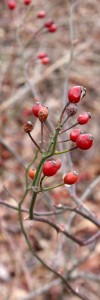
Note the red rose hips on the green stems that grew last year on the branches of this Multiflora Rose.
It seems strange that any of the seeds or fruit would last through the coldest season, when animals must be just as hungry as any other season. Wouldn’t they? Sure, bears and others do hibernate and slow their activities, but don’t most of them have to eat something?
Wandering around the mountain top I could find several red berries that made in through winter. Don’t they taste good?
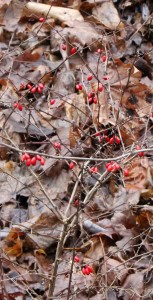
Note the spikes on the branches with the oblong shiny red fruits on this Japanese Barberry.
(Photos of barberry and wild rose taken 31 Dec 2015. Click on small images to see a larger view.)

Maybe the spikiness of the leaves prohibits some critters from partaking of the red holly berries.
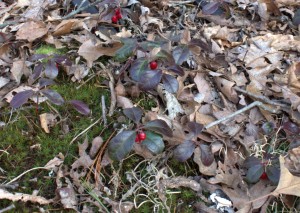
The low-growing wintergreens seemed to have kept all their red berries. I was surprised to see so many red fruits still dangling just above the soil and among the leaf litter of the forest.
Besides the obvious red berries that stand out in these bleak days other fruits remain stuck to their branches.
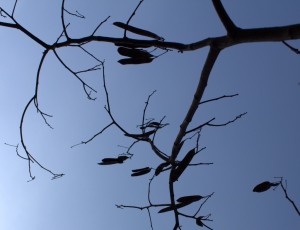
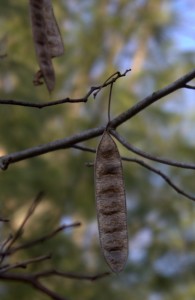
Seed pods of the mimosa tree hang around through Winter.
Squirrels are paying them attention now that it’s Spring and they’re probably burying them everywhere. No wonder this plant is called a nuisance. It’s a non-native to the U.S. and it has a little help being planted to ensure its success.

The seedy fruits of the native maple leaved viburnum may last through winter. The dark, almost black flattened spheres are now wrinkly and dried. Birds, squirrels and chipmunks may dine on them soon.
We always leave the dead cones of Echinacea standing through winter. Since that’s how Mother Nature would have it, we leave it be. It doesn’t look that good as far as landscaping goes, but when the goldfinches start yellowing up they appear and take part in finishing off the seeds that the purple cone flowers provide.
Who doesn’t like to see these signs of Spring? Maybe plants are supposed to keep some seeds until Spring.
(Photos of holly, wintergreen and viburnum taken 8 Mar 2016.)